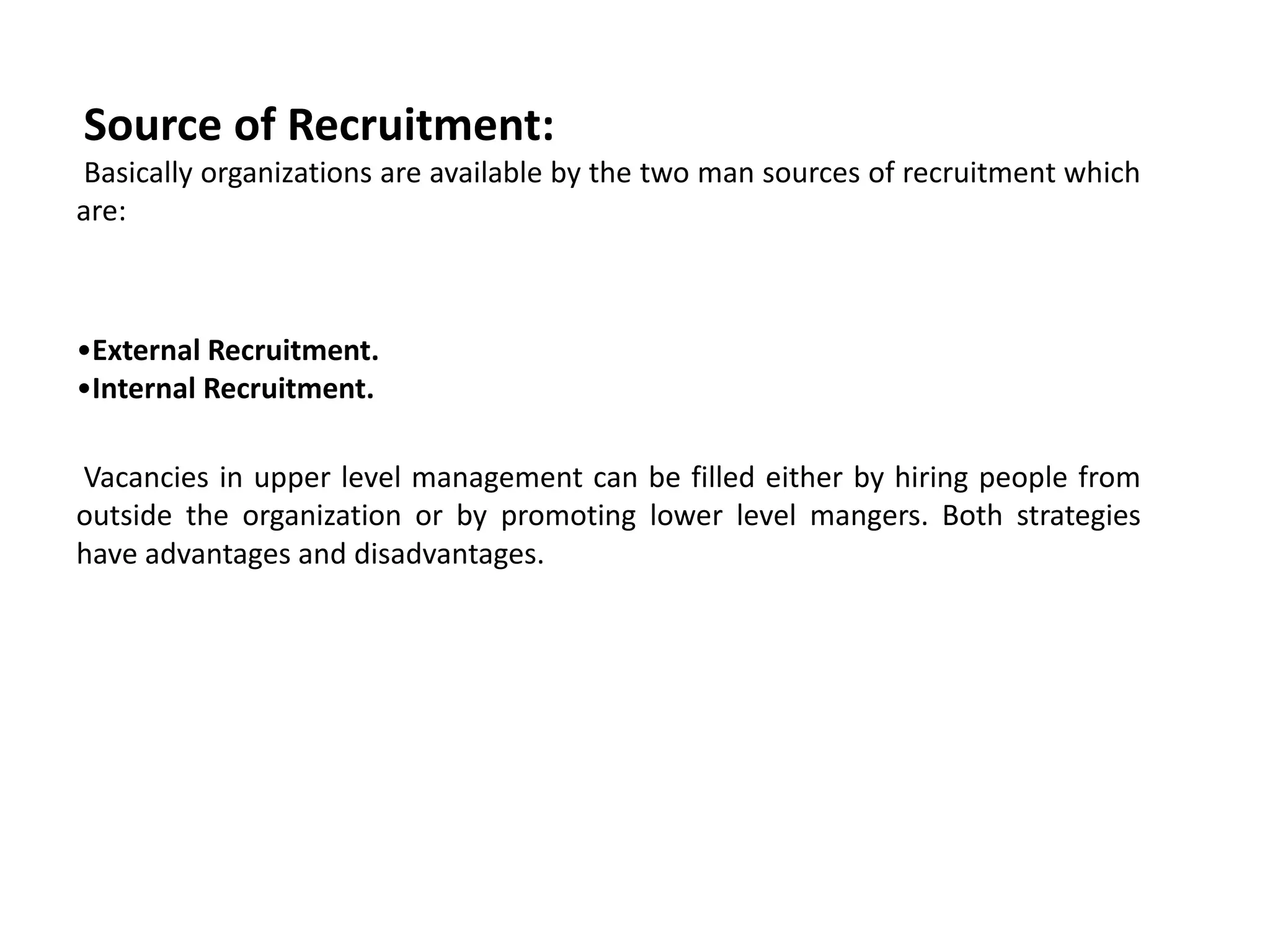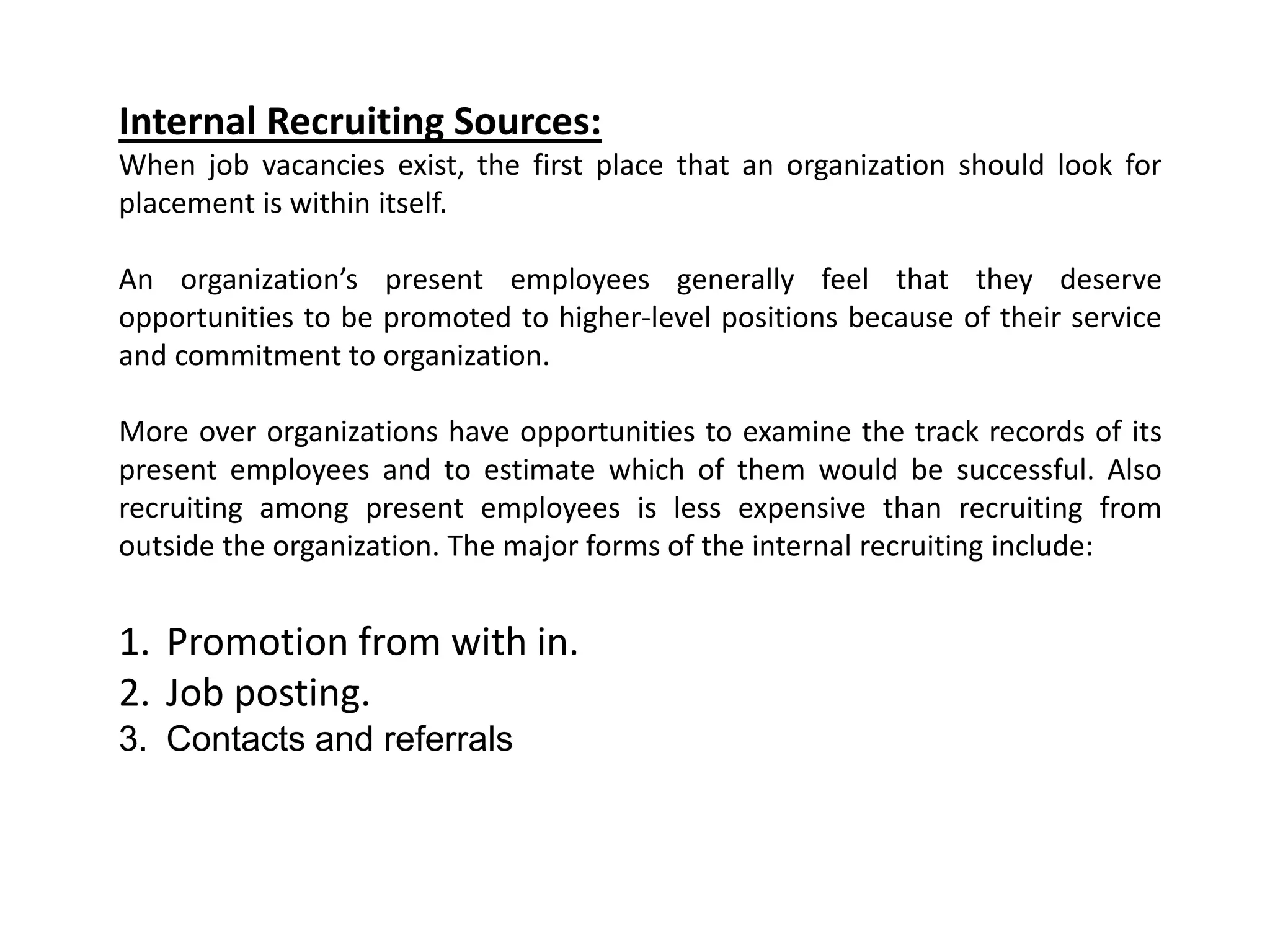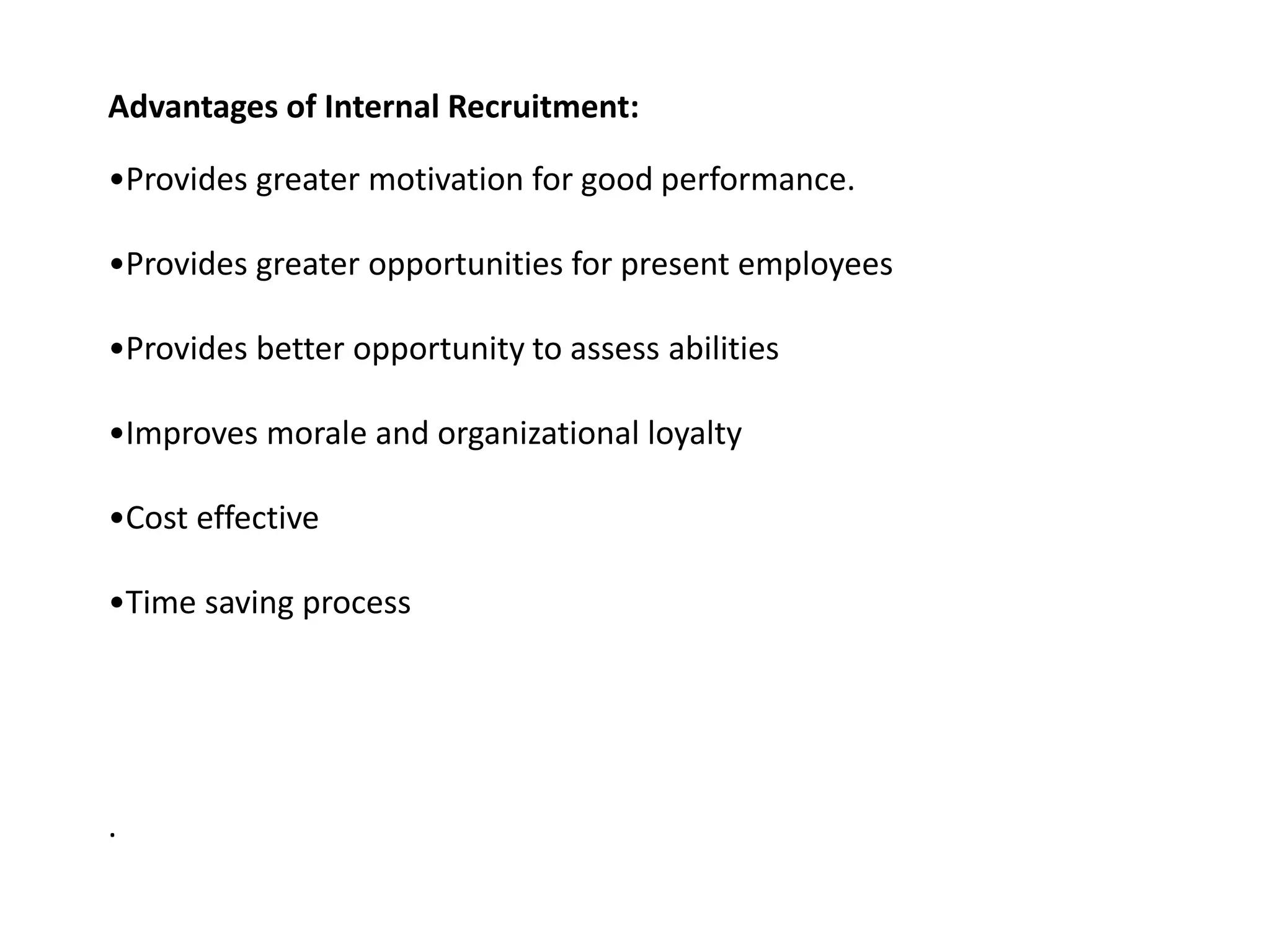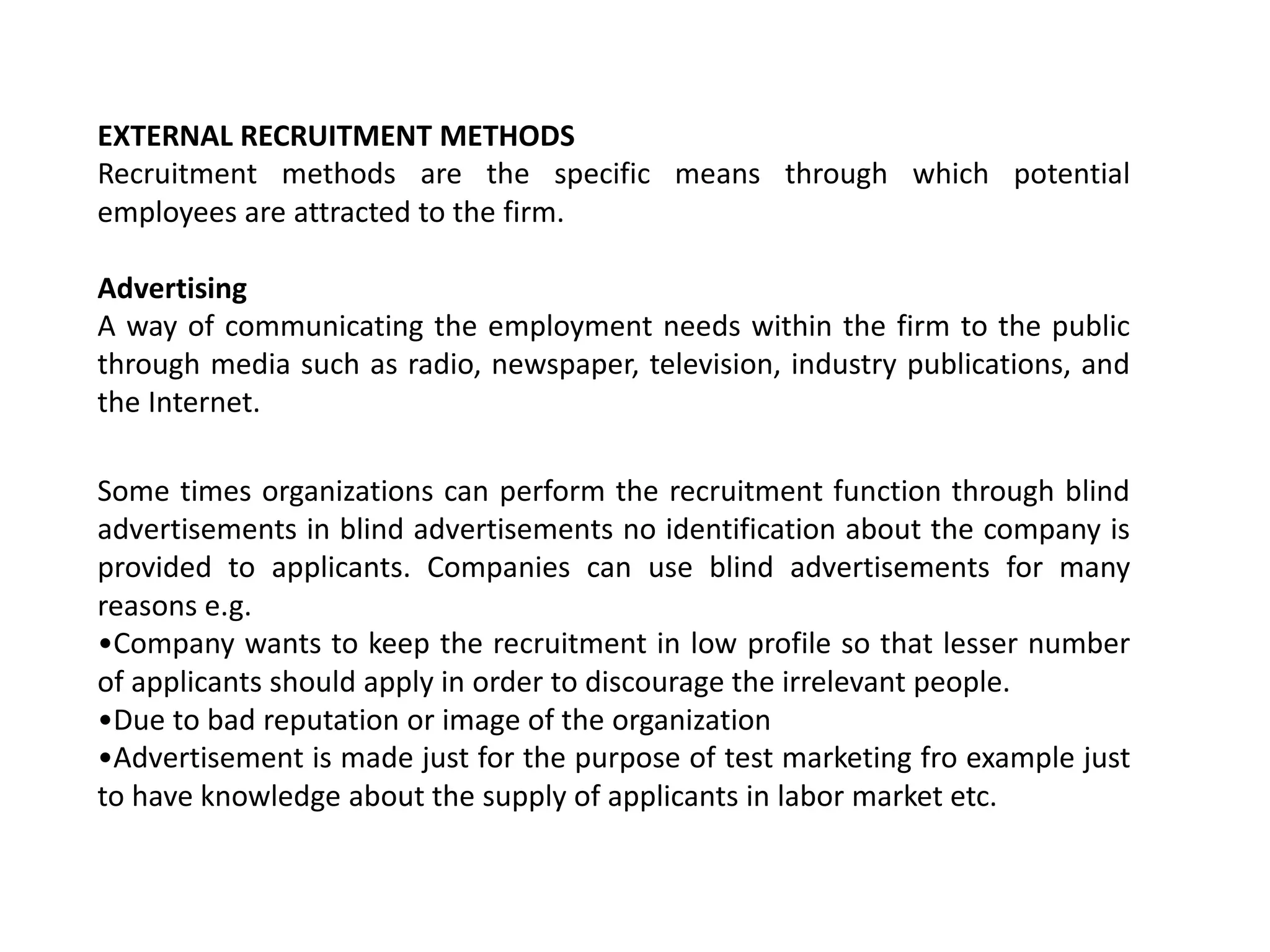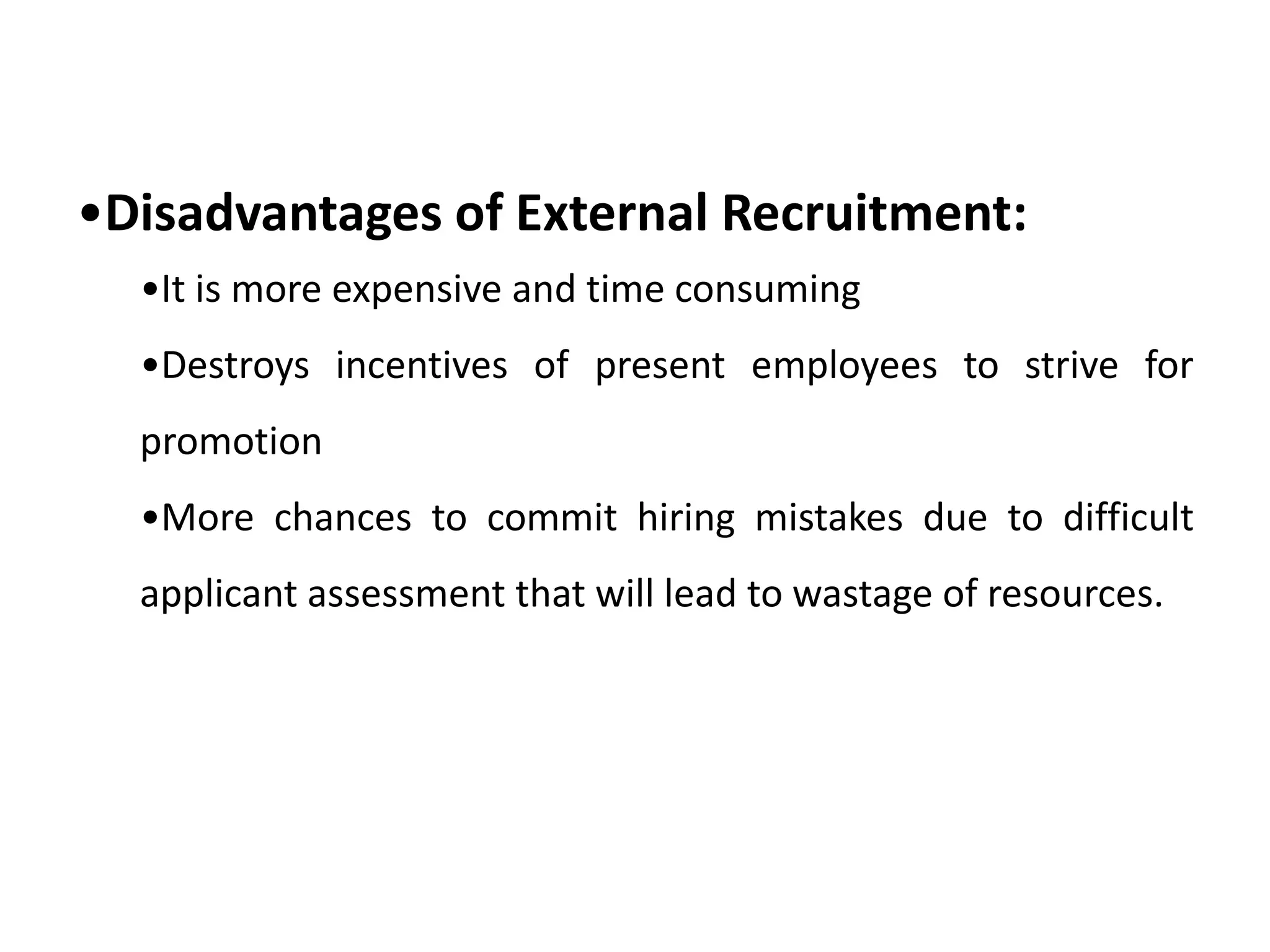The document discusses recruitment, which it defines as the process of finding and attracting capable applicants for employment. It describes internal recruitment sources like promotions, job postings, and referrals from existing employees, as well as external sources like schools, employment agencies, recruiters, and online methods. The advantages and disadvantages of internal and external recruitment are provided. Alternatives to recruitment like outsourcing, contingent workers, employee leasing, and overtime are also summarized.





